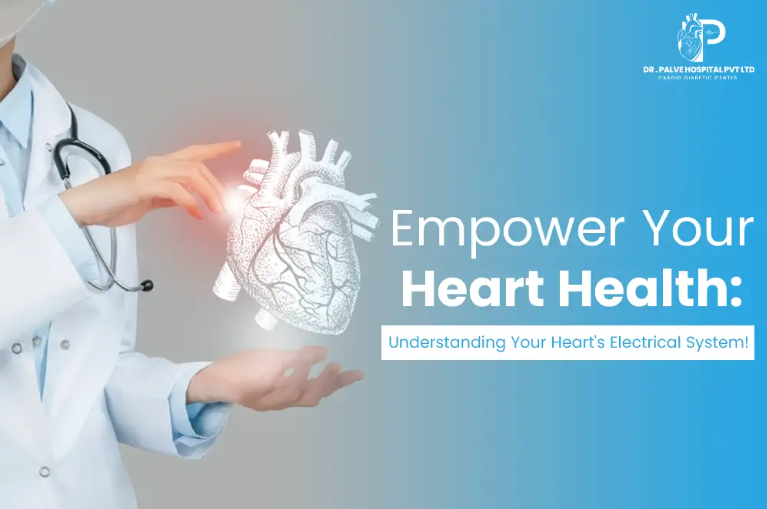
The heart is a remarkable organ, functioning as the body’s pump to circulate blood and deliver essential nutrients and oxygen to tissues. At the core of its functionality lies a specialized electrical system that coordinates each heartbeat. Understanding this system is crucial for grasping how the heart operates and how various heart conditions can impact overall health. This blog will delve into the intricacies of the heart’s electrical system, its components, and its significance in maintaining optimal heart health.
The Basics of the Heart’s Electrical System
The heart’s electrical system, also known as the cardiac conduction system, is a network of specialized cells responsible for generating and conducting electrical impulses. These impulses trigger heart contractions, ensuring that blood flows efficiently throughout the body. The primary components of this system include the sinoatrial (SA) node, atrioventricular (AV) node, bundle of His, bundle branches, and Purkinje fibers.
The Sinoatrial (SA) Node
The SA node is often referred to as the heart’s natural pacemaker. Located in the right atrium, it generates electrical impulses that initiate each heartbeat. Under normal circumstances, the SA node fires at a rate of 60 to 100 beats per minute, setting the pace for the entire heart. This electrical impulse spreads through the atria, causing them to contract and push blood into the ventricles.
The SA node’s ability to generate impulses is influenced by various factors, including physical activity, stress, and hormonal changes. For instance, during exercise or periods of stress, the body releases adrenaline, which can increase heart rate by stimulating the SA node to fire more rapidly.
The Atrioventricular (AV) Node
After passing through the atria, the electrical signal reaches the AV node, situated between the atria and ventricles. The AV node serves as a gatekeeper, briefly delaying the impulse before allowing it to pass into the ventricles. This delay is crucial as it gives the ventricles time to fill with blood from the atria before they contract.
The AV node also plays a significant role in coordinating the timing of contractions between the atria and ventricles. If there is a problem with the SA node or if it fails to generate impulses effectively, the AV node can take over as a secondary pacemaker but at a slower rate.
The Bundle of His and Purkinje Fibers
From the AV node, the impulse travels down through the bundle of His, which divides into right and left bundle branches that extend into each ventricle. The signal then spreads through Purkinje fibers, which distribute it throughout the ventricular muscle. This coordinated action causes both ventricles to contract simultaneously, pumping blood out to the lungs and body.
The rapid conduction through these fibers ensures that both ventricles contract almost simultaneously, maximizing efficiency in blood pumping. Any disruption in this conduction pathway can lead to arrhythmias or other cardiac issues.
Arrhythmias of the Heart
When there are disruptions in this electrical system, it can lead to various arrhythmias of the heart—conditions where the heart beats too fast, too slow, or irregularly. Common types of arrhythmias include:
- Atrial Fibrillation: A condition characterized by rapid and irregular beating of the atria. This can increase the risk of stroke due to blood clots forming in the heart.
- Ventricular Tachycardia: A fast heartbeat originating from the ventricles that can be life-threatening if not treated promptly.
- Ventricular Arrhythmia: Abnormal rhythms originating in the ventricles that can lead to sudden cardiac arrest.
These arrhythmias can significantly impact an individual’s quality of life, leading to symptoms such as palpitations, dizziness, or even fainting.
Diagnosis and Treatment Options
Diagnosing issues related to the heart’s electrical system typically involves a combination of patient history, physical examinations, and diagnostic tests such as electrocardiograms (EKGs) or Holter monitors. An EKG records electrical activity over time and can reveal irregularities in heart rhythm or structure.
Once diagnosed, there are various treatment options available depending on specific conditions:
- Medications: Antiarrhythmic drugs may be prescribed to help control abnormal heart rhythms or manage other conditions like high blood pressure.
- Cardiac Device Implantation: In some cases, devices such as pacemakers or implantable cardioverter-defibrillators (ICDs) may be necessary to regulate heartbeats.
- Ablation Therapy: This minimally invasive procedure involves destroying small areas of heart tissue responsible for abnormal signals.
- Lifestyle Changes: Adopting a heart-healthy lifestyle—including regular exercise and a balanced diet—can significantly improve overall cardiovascular health.
Heart Failure Medication
For individuals with more severe conditions such as heart failure, specific medications may be required to manage symptoms and improve function. These medications help reduce fluid build-up in the body and improve overall heart function.
The Role of Lifestyle in Heart Health
Maintaining optimal heart health goes beyond medical treatments; lifestyle choices play a crucial role in supporting cardiovascular function. A well-rounded approach includes:
- Regular Exercise: Engaging in physical activity strengthens the heart muscle and improves circulation.
- Healthy Diet: Following a balanced diet rich in nutrients contributes significantly to overall well-being.
- Stress Management: Chronic stress can negatively impact heart health; incorporating relaxation techniques such as yoga or meditation can help manage stress levels.
- Avoiding Smoking and Excessive Alcohol: Both smoking and excessive alcohol consumption are significant risk factors for heart disease.
Understanding the electrical system of the heart is essential for recognizing how it functions and how various conditions can affect its performance. By being aware of potential arrhythmias and their implications on health, individuals can take proactive steps toward maintaining their cardiovascular well-being.
If you have concerns about your heart health or are experiencing symptoms related to your cardiovascular system, don’t hesitate to reach out to Dr. Palve Multispeciality Hospital today. Our dedicated team is here to provide comprehensive care tailored to your needs!
Related Posts
- World Stroke Day: Know the Signs, Reduce Your Risk
- Heart Health for Women: Expert Insights from a Cardiologist
- Heart Attack During Exercise: Causes & Risks
- Preventing Stroke and Cardiovascular Diseases: Essential Diabetes Management Tips
- Essential Tips for Diabetic Cardiac Patients: Blood Sugar Control and Heart Health










